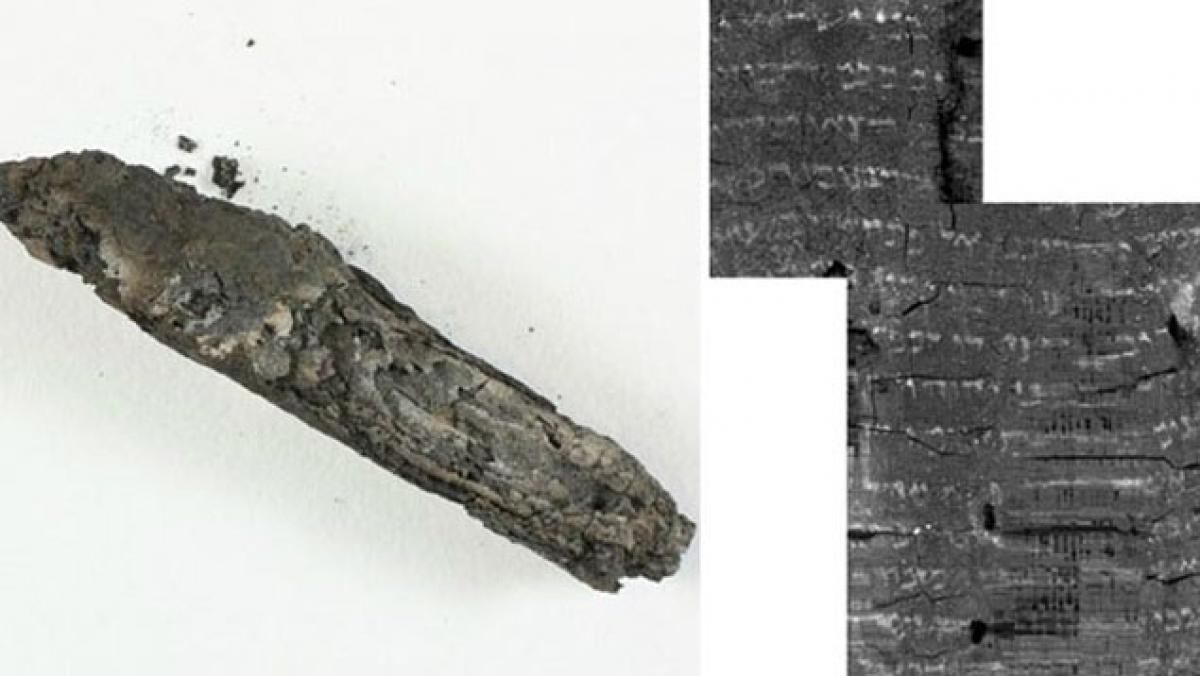Live
- Must-Watch OTT Originals in 2024: The Year’s Best Shows and Movies
- 40 Indian startups secure over $787 mn in a week
- India now formidable force on chess board
- Raghavendra Mutt pontiff visits Tirumala
- Whistleblower of OpenAI found dead in US apartment
- Trump’s US-first policy & India’s strategic latitude
- Chandrababu pays tribute to Potti Sriramulu and Sardar Vallabhbhai Patel
- India may miss TB elimination target
- Revolutionizing Women’s Health: The Era of AI
- Govt bill explains plan for ONOE
Just In

x
Highlights
Scientists have for the first time been able to read Biblical verses from a badly burned scroll that is at least 1,500 years old.To date, this is the most ancient scroll from the five books of the Hebrew Bible to be found since the Dead Sea scrolls, most of which are ascribed to the end of the Second Temple period (first century BCE-first century CE).
Scientists have for the first time been able to read Biblical verses from a badly burned scroll that is at least 1,500 years old.To date, this is the most ancient scroll from the five books of the Hebrew Bible to be found since the Dead Sea scrolls, most of which are ascribed to the end of the Second Temple period (first century BCE-first century CE).
The parchment scroll was unearthed in 1970 in archaeological excavations in the synagogue at Ein Gedi but it had been so badly burnt it could not be deciphered.

Now, high-resolution scanning and University of Kentucky professor Brent Seales' revolutionary virtual unwrapping tool revealed verses from the beginning of the Book of Leviticus suddenly coming back to life.
The rare find was presented at a press conference in Jerusalem earlier this week, attended by Israel's Minister of Culture and Sports MK Miri Regev and director of the Israel Antiquities Authority, Israel Hasson.
Mr Seales, who attended the event via Skype, said in a statement: "The text revealed from the Ein Gedi scroll was possible only because of the collaboration of many different people and technologies."
"The last step of virtual unwrapping, done at the University of Kentucky through the hard work of a team of talented students, is especially satisfying because it has produced readable, identifiable, biblical text from a scroll thought to be beyond rescue," he added.
It turned out that part of the scroll is from the beginning of the Book of Leviticus, written in Hebrew and dated to the late sixth century CE.
The results come from research and a software prototype designed to do "virtual unwrapping" of surfaces from within volumetric scans.
This unwrapping process allows the visualisation of evidence of writing on a surface from within a scanned volume.
"I have been using the word 'surface' to refer to the page of biblical text we have revealed. But this is a term of geometry, not of precise position," Mr Seales said.
"The page actually comes from a layer buried deep within the many wraps of the scroll body, and is possible to view it only through the remarkable results of our software, which implements the research idea of 'virtual unwrapping'," he explained.
The discovery has been met with great surprise and excitement as the first eight verses of the Book of Leviticus suddenly became legible.
This is the first time in any archaeological excavation that a Torah scroll was found in a synagogue, particularly inside a Holy Ark.

Next Story
More Stories
ADVERTISEMENT
© 2024 Hyderabad Media House Limited/The Hans India. All rights reserved. Powered by hocalwire.com







